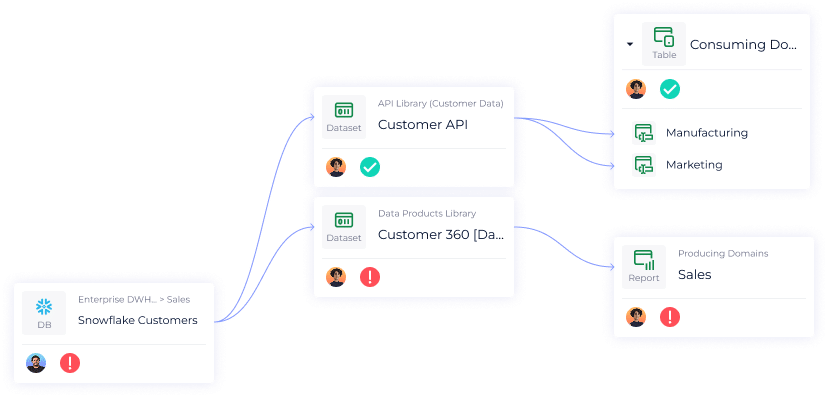According to Melody Chien, Sr. Research Director at Gartner, organizations are undergoing a significant shift in how they approach data and analytics - And specifically AI readiness.
The future is moving toward a unified data management platform, where essential technologies converge to create a more streamlined, intelligent business ecosystem. As data volumes increase yearly, organizations must ensure their data management practices are AI-ready.
Melody outlined three core components for building AI readiness and driving data evolution: Metadata management, data quality, and data observability. Keep reading to discover more about these three essential steps
1. Metadata management: The foundation for data discovery
Metadata management has become a cornerstone of the evolution of AI readiness.
According to Melody, the key to successful AI readiness lies in discovering, cataloging, and documenting metadata in a centralized, unified location. This is crucial because metadata provides critical context to raw data by answering the "who," "what," "where," "when," and "how" behind each data point. It transforms otherwise isolated information into meaningful, actionable insights.
First-class Data Lineage
Explore, personalize, and visualize your end-to-end data journey with our first-in-class Data Lineage UX
DataGalaxy enhances data governance by establishing a trusted source of truth with our detailed exploratory Data Lineage visualization. Understand data flows, relationships, and health to ensure data integrity and enhance decision-making across your organization to ensure you never lose control.
When organizations properly manage metadata, they gain visibility into their data assets. This includes how data is sourced, structured, and used across departments. This level of clarity enhances data discoverability and reusability and fosters stronger collaboration between business and IT teams. Through a shared understanding of data definitions, relationships, and lineage, organizations can build a comprehensive business glossary that aligns technical and business perspectives. This is essential for AI-driven projects where data interpretation is key.
According to Melody, the key to successful AI readiness lies in discovering, cataloging, and documenting metadata in a single place. This is crucial because metadata gives context to your data, transforming raw data into valuable, actionable insights.
Centralized metadata management enables businesses to:
Build a comprehensive business glossary
Add business context to data
Foster collaboration between business & IT teams
Efficiently manage & access data
Track data evolution & lineage over time
2. Data quality: Ensuring clean, consistent, and reliable data
Data quality is the next essential pillar in preparing for AI, playing a critical role in ensuring reliable and effective outcomes.
As Melody noted, with the exponential growth of data, the information used for AI models must be clean, standardized, and free from duplication. Poor-quality data can lead to biased insights and inaccurate predictions. This makes strong data quality practices a necessity - Not a luxury.
Effective data quality management includes:
Cleansing to remove inaccuracies
De-duplication to eliminate redundancies
Standardization to maintain consistency across systems
These practices help ensure that data is accurate, trustworthy, and ready for both advanced machine learning and everyday decision-making.
Even the most advanced AI models will fail if they’re trained on poor-quality data. Inconsistent or unreliable data can undermine business outcomes, damage trust, and increase compliance risks. That’s why scalable, proactive data quality frameworks are essential for any organization aiming to lead in a data-driven world.
3. Data observability: Real-time monitoring & proactive management
Melody highlighted the third key component: Data observability, which enables real-time monitoring of data health.
As data volumes continue to grow - Doubling or even tripling year over year - organizations need to continuously monitor their data systems to ensure they are functioning as expected. Data observability solutions provide:
The ability to track data flows across the organization
This real-time insight helps data teams detect anomalies and resolve issues before they impact business operations, providing the agility needed in a fast-paced, data-driven environment.
The intersection: Unifying these pillars for AI success
Melody Chien emphasized that the magic truly happens at the intersection of these three technologies: Metadata management, data quality, and data observability.
By integrating these pillars, organizations can build a robust, AI-ready ecosystem. This convergence streamlines data governance and fosters collaboration between business and IT teams to define and manage quality standards, track data lineage, and monitor data health.
As AI becomes a more significant part of business strategies, having a unified data management platform that supports these three pillars will enable organizations to unlock the full potential of their data and transform insights into actionable outcomes.
Fueling smarter decisions for
200+ industry powerhouses.










